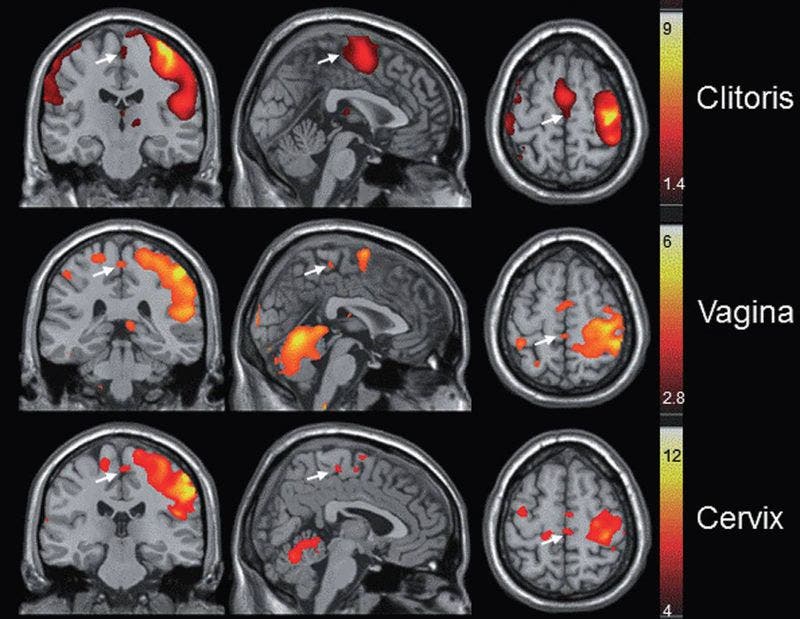The most detailed female orgasm study to date shows that climax also turns on the brain.

There are quite a few studies on brain activity during sexual arousal, but orgasm studies are few and far between, for several reasons; one reason explained by Nan Wise at Rutgers University in Newark, New Jersey, is that brain scanners like fMRIs are some of the least sexy places on Earth. They’re cold, tight, and make a lot of noise. You must also lie perfectly still, which makes climaxing much more difficult. Funding for this type of studies is also quite difficult to obtain — committees seem reluctant to grant money to researchers attempting to look at people’s brains as they orgasm.
Wise and her colleagues managed to overcome these hurdles and recruited 10 heterosexual women for a study. The study had two stages; in the first stage, the women stimulated themselves to orgasm, and in the second stage, their partners stimulated them. Researchers analyzed brain activity in 20-second intervals to see what happens just before, during, and after the happy moment.
For starters, they discovered that, contrary to what many believed, no section of the female brain shuts down during orgasm.
“Brain activity gradually increased leading up to orgasm, peaked at orgasm, and then decreased. We found no evidence of deactivation of brain regions leading up to or during orgasm,” the study reads.
This belief originated in a 1985 study that found that women are less likely to notice pain and are capable of tolerating more of it; one way to interpret this data is that a brain area associated with pain shuts down. However, the new study proves this idea wrong. The brain switches on rather than off, with numerous areas increasing activity. The activated brain regions included sensory, motor, reward, frontal cortical, and brainstem regions.
In particular, they saw increased activity in an area called the nucleus cuneiformis, which is associated with pain control and modulation. Wise believes that this surge in activity explains the results of the 1985 study.
This finding might also be connected to childbirth, where vaginal stimulation could help mothers cope with the final stages of birth. It might also help physicians understand and treat disorders such as anhedonia — the inability to experience pleasure. We still know little about how pleasure manifests in the brain.
In case you’re wondering what it’s like to participate in such a study, Wise says you don’t need to be an exhibitionist. Rather, she explains, it’s empowering for women — of all ages.
“Some women do like that aspect, but most are doing it because it’s empowering to them. Some find it difficult to orgasm, others don’t. One of our participants in this experiment was a 74-year-old lady who had two fabulous orgasms in the machine. I said to her, ‘You go girl!’ ”
So this type of study feels good, it’s empowering, and it helps science. What’s not to like?
Journal Reference: Nan J.Wise, Eleni Frangos, Barry R. Komisaruk. Brain Activity Unique to Orgasm in Women: An fMRI Analysis. https://doi.org/10.1016/j.jsxm.2017.08.014






